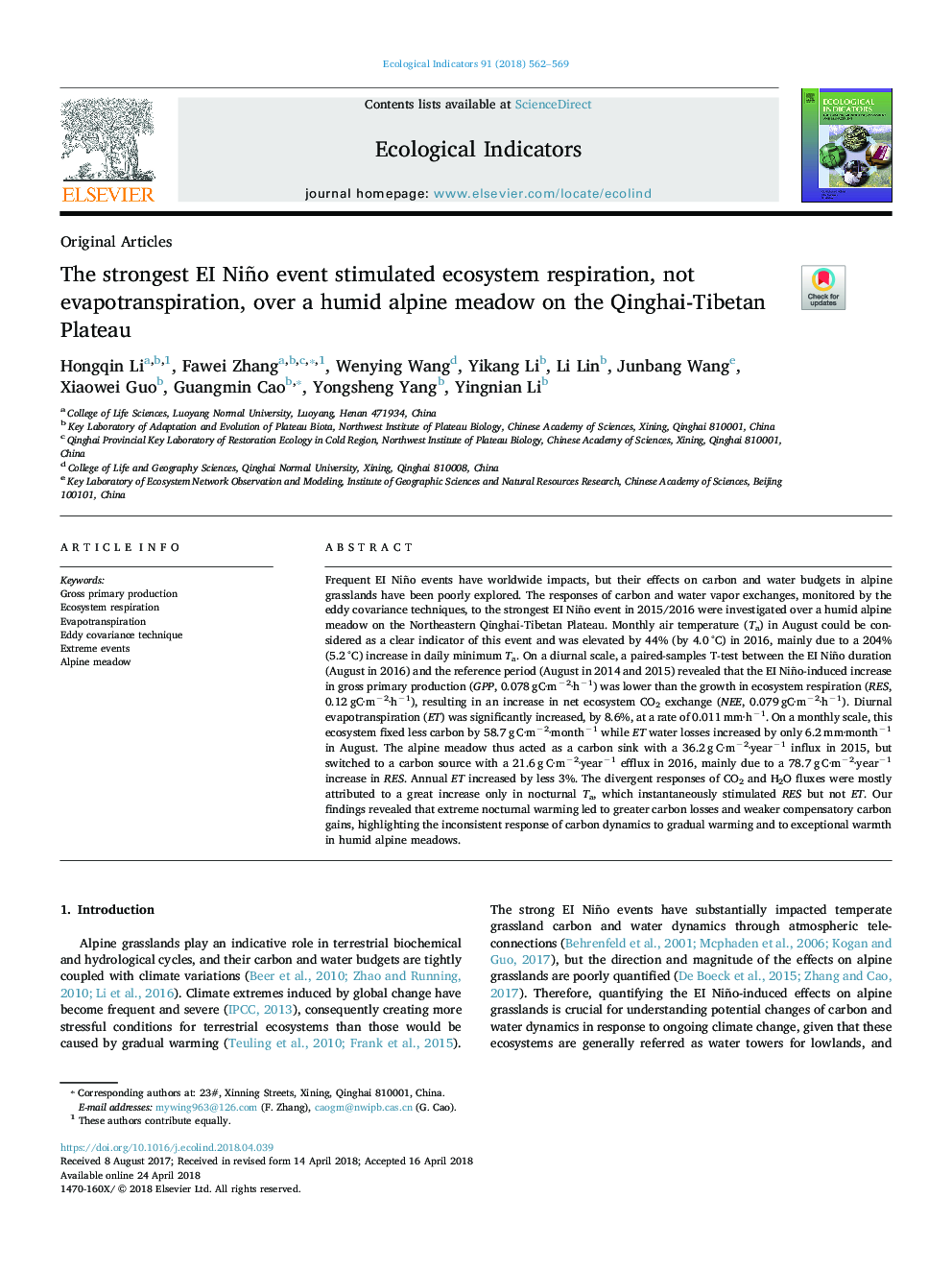| کد مقاله | کد نشریه | سال انتشار | مقاله انگلیسی | نسخه تمام متن |
|---|---|---|---|---|
| 8845375 | 1617111 | 2018 | 8 صفحه PDF | دانلود رایگان |
عنوان انگلیسی مقاله ISI
The strongest EI Niño event stimulated ecosystem respiration, not evapotranspiration, over a humid alpine meadow on the Qinghai-Tibetan Plateau
دانلود مقاله + سفارش ترجمه
دانلود مقاله ISI انگلیسی
رایگان برای ایرانیان
کلمات کلیدی
موضوعات مرتبط
علوم زیستی و بیوفناوری
علوم کشاورزی و بیولوژیک
بوم شناسی، تکامل، رفتار و سامانه شناسی
پیش نمایش صفحه اول مقاله

چکیده انگلیسی
Frequent EI Niño events have worldwide impacts, but their effects on carbon and water budgets in alpine grasslands have been poorly explored. The responses of carbon and water vapor exchanges, monitored by the eddy covariance techniques, to the strongest EI Niño event in 2015/2016 were investigated over a humid alpine meadow on the Northeastern Qinghai-Tibetan Plateau. Monthly air temperature (Ta) in August could be considered as a clear indicator of this event and was elevated by 44% (by 4.0â¯Â°C) in 2016, mainly due to a 204% (5.2â¯Â°C) increase in daily minimum Ta. On a diurnal scale, a paired-samples T-test between the EI Niño duration (August in 2016) and the reference period (August in 2014 and 2015) revealed that the EI Niño-induced increase in gross primary production (GPP, 0.078â¯gC·mâ2·hâ1) was lower than the growth in ecosystem respiration (RES, 0.12â¯gC·mâ2·hâ1), resulting in an increase in net ecosystem CO2 exchange (NEE, 0.079â¯gC·mâ2·hâ1). Diurnal evapotranspiration (ET) was significantly increased, by 8.6%, at a rate of 0.011â¯mm·hâ1. On a monthly scale, this ecosystem fixed less carbon by 58.7â¯gâ¯C·mâ2·monthâ1 while ET water losses increased by only 6.2â¯mm·monthâ1 in August. The alpine meadow thus acted as a carbon sink with a 36.2â¯gâ¯C·mâ2·yearâ1 influx in 2015, but switched to a carbon source with a 21.6â¯gâ¯C·mâ2·yearâ1 efflux in 2016, mainly due to a 78.7â¯gâ¯C·mâ2·yearâ1 increase in RES. Annual ET increased by less 3%. The divergent responses of CO2 and H2O fluxes were mostly attributed to a great increase only in nocturnal Ta, which instantaneously stimulated RES but not ET. Our findings revealed that extreme nocturnal warming led to greater carbon losses and weaker compensatory carbon gains, highlighting the inconsistent response of carbon dynamics to gradual warming and to exceptional warmth in humid alpine meadows.
ناشر
Database: Elsevier - ScienceDirect (ساینس دایرکت)
Journal: Ecological Indicators - Volume 91, August 2018, Pages 562-569
Journal: Ecological Indicators - Volume 91, August 2018, Pages 562-569
نویسندگان
Hongqin Li, Fawei Zhang, Wenying Wang, Yikang Li, Li Lin, Junbang Wang, Xiaowei Guo, Guangmin Cao, Yongsheng Yang, Yingnian Li,